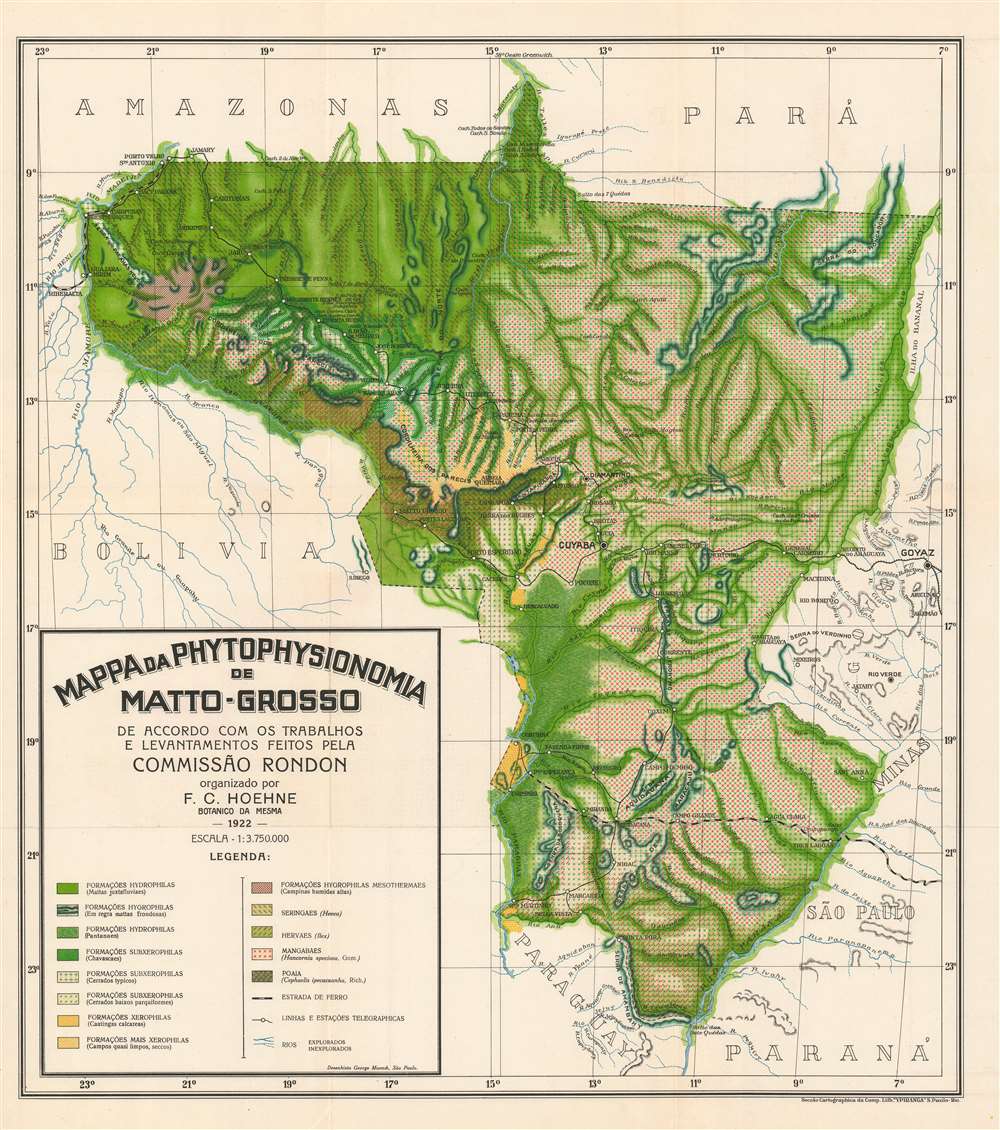This item has been sold, but you can get on the Waitlist to be notified if another example becomes available, or purchase a digital scan.
1922 Hoehne Map of the Mato Grosso, Brazil
MattoGrosso-hoehne-1922
Title
1922 (dated) 25.25 x 22.5 in (64.135 x 57.15 cm) 1 : 3750000
Description
Publication History and Census
This map was created by Frederico Carlos Hoehne, drawn by George Muench, and printed by Ypiranga Lithography in 1922. This is the only known example.Cartographer
Frederico Carlos Hoehne (February 1, 1882 - March 16, 1959) was a Brazilian ecologist, taxonomist, and botanist. Hoehne was born in Juiz de Fora and his parents ran an orchid hothouse and farm. He was homeschooled before attending the Colégio Americano, where he continued his education in botany under the guidance of João Barbosa Rodrigues and Emilio Jobet. He was named head gardener (jardiniere-chefe) at the National Museum in Rio de Janeiro in 1907. He soon became involved in the Rondon Commission and conducted surveys of plant life in the Mato Grosso and Amazonas regions. He also participated in the expeditions surrounding the establishment of the telegraph lines in 1910 and served as the botanist on the Roosevelt-Rondon expedition, which was in the field in 1913-1914. By 1917 he held a position at the Instituto de Botánica in São Paulo and was named director in 1942. Hoehne was a prolific author, contributing to the final reports of all the major expeditions of which he was a part, as well as writing numerous books and well over fifty articles. He founded the Botanical Garden of São Paulo, and was also director of the Butantan Institute and the São Paulo Zoo. He married Carla Augusta Frieda Kulhmann in 1907, with whom he had four children. More by this mapmaker...

